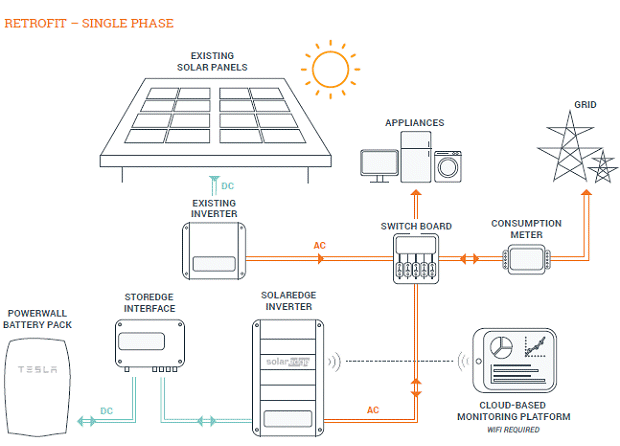STORAGE

When selecting a solar battery, arguably the most important factor to consider is the storage capacity. This will determine how much energy can be stored and will be available to use. If you’re not very familiar with solar batteries, this can be confusing. We’re here to break it down so you understand exactly what you’re looking for when purchasing the right solar battery. Here are the top three things you need to know about storage capacity:
KILOWATT HOURS (Kw h)
Kilowatt hours, or Kw h, is a measurement of energy. When referring to solar batteries, energy measures how much fuel is contained in something, or used over a certain amount of time. Kw h is used to describe how much energy can be stored in the solar battery. This measurement tells how big the battery is, but not how much electricity a battery can provide.
Kilowatts (kW) is a different measure that tells how much electricity the battery can deliver. So, it is important to know the difference. For example, a battery that measures high in kilowatt hours, but low in kilowatts, would deliver a small amount of electricity for a long time. Solar batteries range anywhere from 2.5 – 16 Kw h, so it’s important to know your storage needs.
ROUND-TRIP EFFICIENCY
Every solar battery has a certain round-trip efficiency. This simply means the amount of energy that can be used in regards to the amount of energy it took to store it. For example, if you charged your solar battery with 5 Kw h and can only use 4 Kw h, your battery has 80% round-trip efficiency. This is an important factor to consider when choosing your solar battery because you want the most efficient battery possible to get more economic value.
DEPTH OF DISCHARGE
Depth of discharge is a critical aspect of any solar battery. This simply means how much of the battery you can use before recharging it. Unfortunately, most batteries cannot be fully depleted and retain optimal performance. For example, if you have a 10 Kw h battery with a 90% depth of discharge, that means you should only use 9 Kw h at the most before recharging it. The higher the depth of discharge, the more use you will be able to get out of your battery’s storage capacity.
